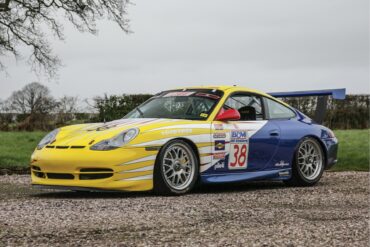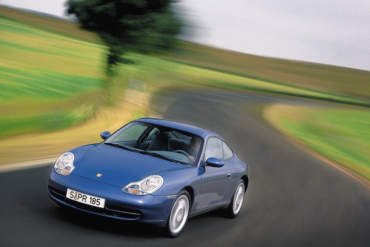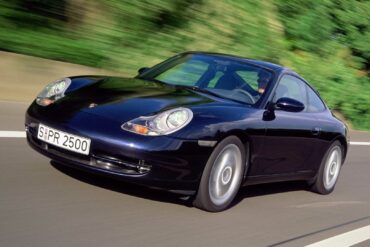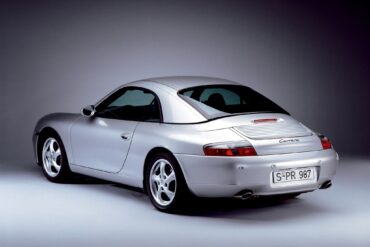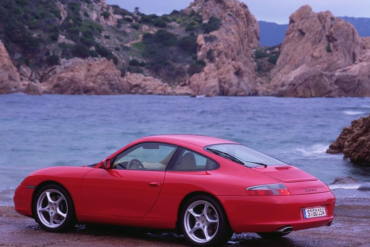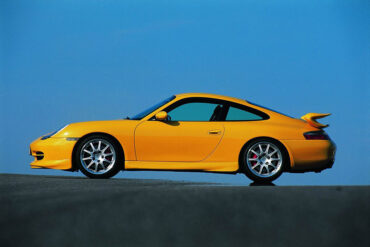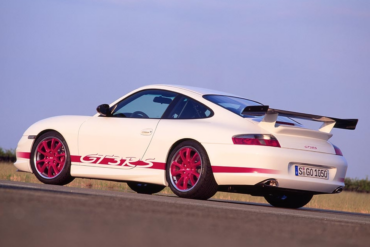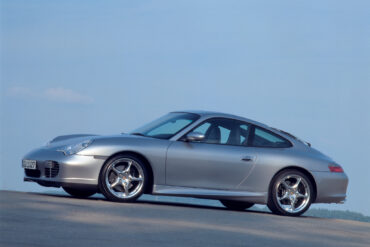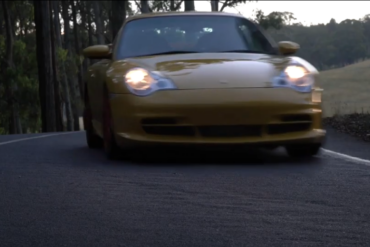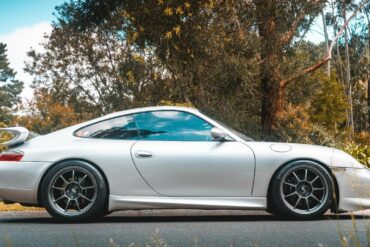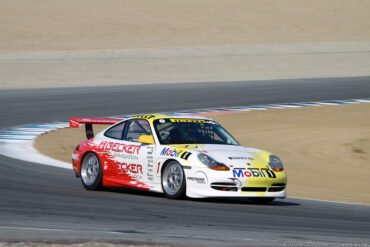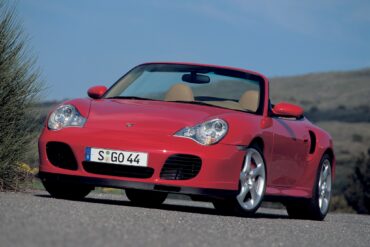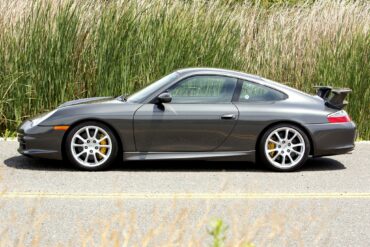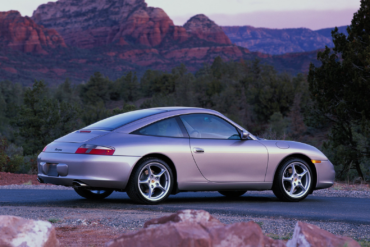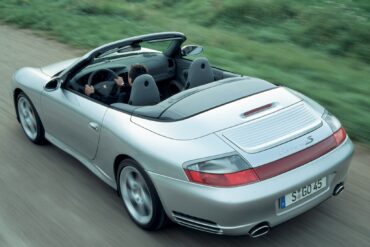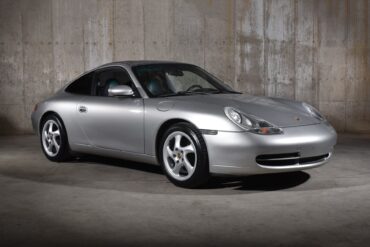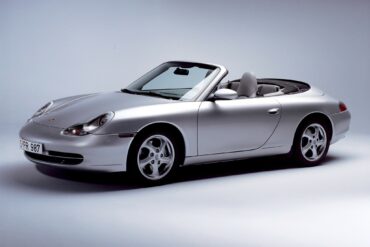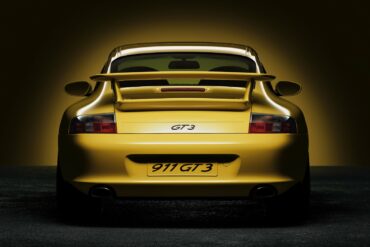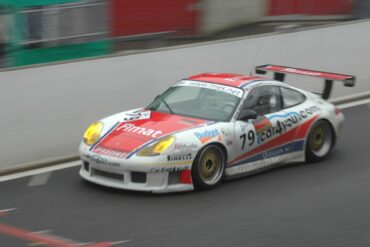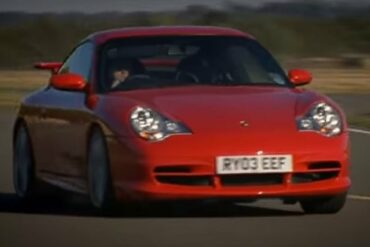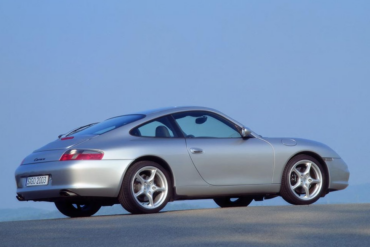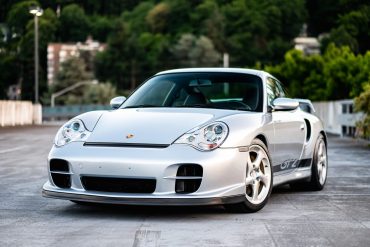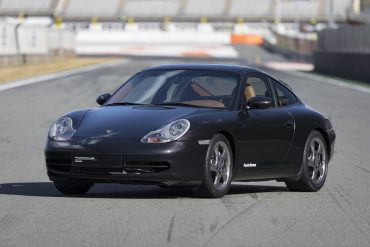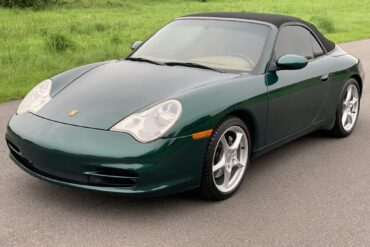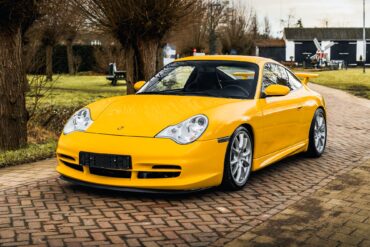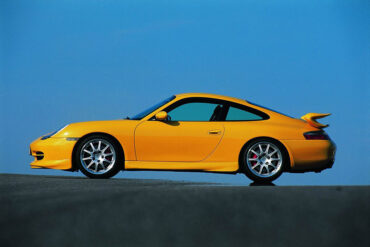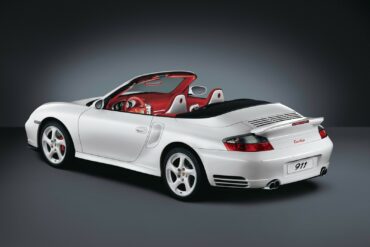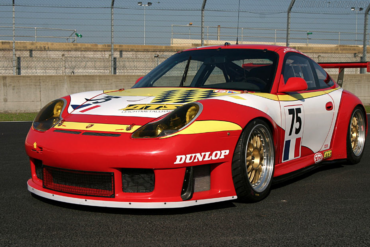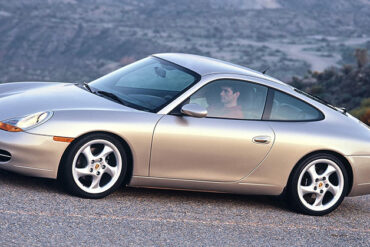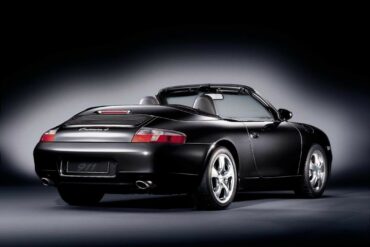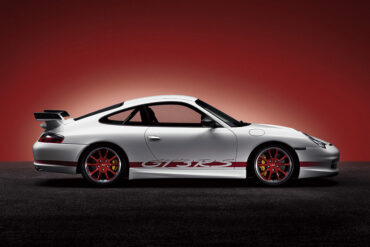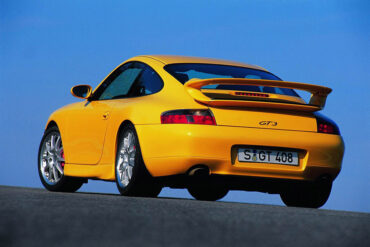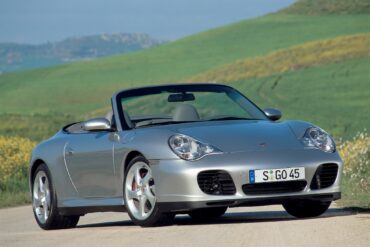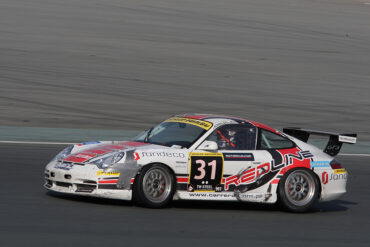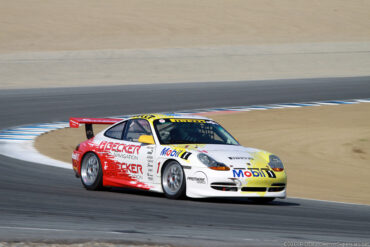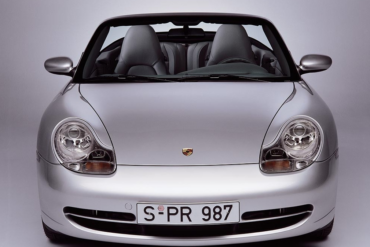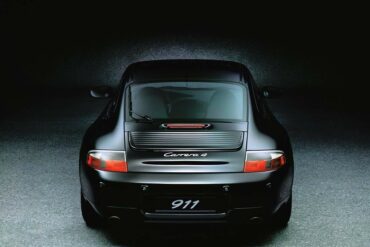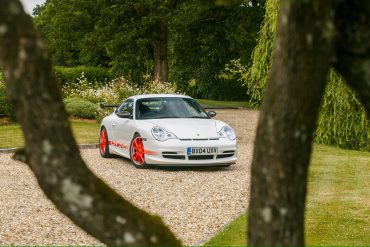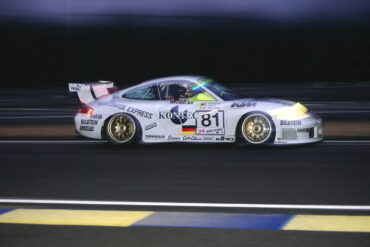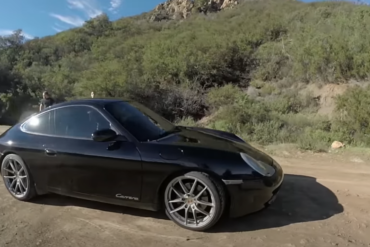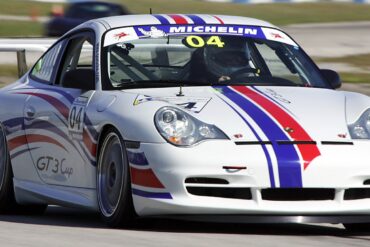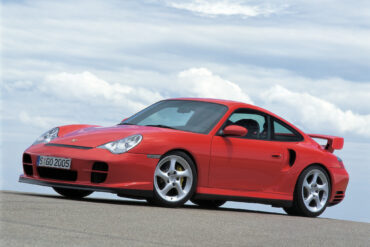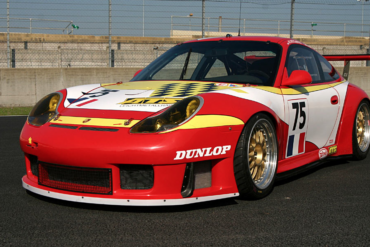Listen to this Porsche 911 996 with x51 package and has been upgraded with Dansk Sport exhaust....
1998 Porsche 911 GT3 Cup (996) Technical Specifications Type Racing Car Built at Germany Engine Flat-6 Displacement 3598 cc /...
2000 Porsche 911 Carrera 4 Coupe (996) Technical Specifications Engine Type Flat 6 Induction Normally-aspirated Cooling Water-cooled Valvetrain Double overhead...
Porsche 911 (996) (1997 – 2005) Story & History Type 996 – The 5th Generation Porsche 911 Premiere: GT1 May...
2001 Porsche 911 Carrera Cabriolet (996) Technical Specifications Engine Type Flat 6 Induction Normally-aspirated Cooling Water-cooled Valvetrain Double overhead camshafts...
In 2002, the entire generation of the 996 was facelifted. The Carrera 4S was introduced and got the new engine...
2002 Porsche 911 Carrera Coupe (996.2) Technical Specifications Engine Type Flat 6 Induction Normally-aspirated Cooling Water-cooled Valvetrain Double overhead camshafts...
2001 Porsche 911 GT3 (996) Technical Specifications Engine Type Flat 6 Induction Naturally Aspirated Cooling Water-cooled Valvetrain 4 Valves per...
The Porsche 996 Turbo Is An Under-appreciated Sports Car & Shouldn’t Be I haven’t got to spend much time behind...
2004 Porsche 911 GT3 RS (996) Technical Specifications Engine Type Flat 6 Induction Naturally Aspirated Cooling Water-cooled Valvetrain Double overhead...
The Porsche 911 is the quintessential high-performance sports car and has been for as long as we can remember. A...
The 996 Turbo basking in the beauty of the Western Cape How our man, Richard Wiley, came to be the...
James takes out this low mileage 996 GT3 RS, currently live on Collecting Cars, to discover how it differs from...
Test Driving a Porsche 996 Turbo with 700 hp The Porsche 996 Turbo is often dismissed by many – with...
Alan and his Porsche Modified 996 Today Outlaw Garage hit the road with Alan and his Porsche 996. We review...
Porsche 911 996 Turbo Review – Worth The Premium Over A C4S? Today I get to drive a car I’ve...
1999 – 2001 Porsche 911 GT3 Cup (996) Technical Specifications Type Racing Car Built at Germany Engine Flat-6 Displacement 3598...
Introducing this new top-of-the-range model, Porsche is once again placing a 911 Turbo Cabriolet right at the top of the family after a break of 14 years: From 1987 - 1989 the Porsche 930, as the first Turbo was code-named within the Company, set the first milestone in the history of these outstanding open-air sports cars. With cylinders still featuring two valves each at the time, the 3.3-litre power unit driving the first Turbo Cabriolet offered maximum output quite unique at the time of 300 bhp or 221 kW. Acceleration from 0 to 100 km/h was in 5.2 seconds and the car had a top speed of 260 km/h or 161 mph.
2004 Porsche 911 GT3 (996.2) Technical Specifications Engine Type Flat 6 Induction Naturally Aspirated Cooling Water-cooled Valvetrain Double overhead camshafts...
2004 Porsche 911 Targa (996) Technical Specifications Engine Type Flat 6 Induction Normally-aspirated Cooling Water-cooled Valvetrain Double overhead camshafts Injection...
2003 Porsche 911 Turbo X50 (996) Technical Specifications Price $ $133,000 Engine Aluminum Alloy, Twin Turbo Flat-6 Position Rear Longitudinal...
2005 Porsche 911 Carrera 4S Cabriolet (996) Technical Specifications Engine Type Flat 6 Induction Normally-aspirated Cooling Water-cooled Valvetrain Double overhead...
2000 Porsche 911 Carrera (996) Technical Specifications Engine Type Flat 6 Induction Normally-aspirated Cooling Water-cooled Valvetrain Double overhead camshafts Injection...
The flat six in the Carrera 996 was a newly-developed flat-six engine that offered 300 hp. It was mated as standard with a six-speed manual. A 5-speed automatic (Tiptronic) with manual override to shift gears was on the options list. As always, the Carrera 2 was rear-wheel-drive. Designed as a grand tourer, the Porsche Carrera Cabriolet was the base version for the open-top 911 range in 1998. The retractable roof was able to be stowed away in 20 seconds at speeds of up to 50 kph (31 mph), like the rest of the 911 convertible range. With the roof up, the car was tested in the wind tunnel at speeds of up to 338 kph (210 mph).
2005 Porsche 911 GT3 (996.2) Technical Specifications Engine Type Flat 6 Induction Naturally Aspirated Cooling Water-cooled Valvetrain Double overhead camshafts...
2003 – 2004 Porsche 911 GT3 RS Race (996) Technical Specifications Concept Porsche 911 GT3 RS Single-seated, near-standard race vehicle...
Porsche 996 GT3 Review Richard Hammond celebrates 40 years of the Porsche 911 by taking the super-fast GT3 to the...
Salon Privé, Blenheim Palace, 1 September 2018: Concours Masters Celebration of 70 Years of Porsche I received the email inviting...
Porsche 911 (996) Paint Color Options This post outlines all the color options for the 996 generation Porsche 911 over...
2003 Porsche 911 Carrera Coupe (996.2) Technical Specifications Engine Type Flat 6 Induction Normally-aspirated Cooling Water-cooled Valvetrain Double overhead camshafts...
The Porsche 911 GT2 combines the sporting character of the 996 911 GT3 with the power and straight line performance of the...
In 1999, Porsche celebrated the turn of the century with a special edition – the 996 "Millennium Edition". The 911 Millennium edition was based on the Carrera 4 coupé and was pretty rare, with only 911 cars made. Based on the Carrera 4, the "Millennium Edition" was limited to 911 examples and was based exclusively on the wide bodied Carrera 4. This special edition was finished in Violet Chromaflair paint, which, depending on the light changes from dark violet to light green and is quite spectacular to look at. It also got a caramel-colored leather interior and polished "turbo-twist" wheels.
2002 Porsche 911 Carrera 4 Cabriolet (996.2) Technical Specifications Engine Type Flat 6 Induction Normally-aspirated Cooling Water-cooled Valvetrain Double overhead...
Porsche introduced the turbocharged version of the Type 996 for the 2001 model year (late 2000 in Europe). Like the 996 GT3, the Turbo's engine was derived from the engine used in the 911 GT1. Like its predecessor, the 993 Turbo, it featured twin-turbos but now had a power output of 420 PS (309 kW; 414 hp). As of 2002, the X50 package would increase engine output to 444 hp. The 996 Turbo was available with a 6-speed manual transmission or an automatic (Tiptronic), driving power to all four wheels. This is a great great car.
Featured here is a a supercharged 996-generation 911, built by famed Porsche tuner RUF. The R Kompressor is based on...
The GT3 was based on the standard 996 Carrera, but was stripped of a great deal of equipment for weight savings, featuring stiffer, adjustable suspension and upgraded brakes. The GT3 used the bodyshell of the four-wheel-drive Carrera 4, which incorporated additional front-end stiffening. It featured a naturally aspirated 3.6-litre flat-six engine generating a maximum power output of 360 bhp @ 7200 rpm and torque of 273 ft lbs @ 5000 rpm. This engine was shared with the 996 Turbo and was a derivative of the engine developed for the 911 GT1 race car.
2003 Porsche 911 Turbo Cabriolet (996) Technical Specifications Engine Type Flat 6 Induction Twin-turbocharged Cooling Water-cooled Valvetrain Double overhead camshafts...
2001 Porsche 911 GT3 RS Race (996) Technical Specifications Type Racing Car Built At Germany Engine Watercooled Flat-6 w/Dry Sump...
1999 Porsche 911 Carrera (996) Technical Specifications Engine Type Flat 6 Induction Normally-aspirated Cooling Water-cooled Valvetrain Double overhead camshafts Injection...
2001 Porsche 911 Carrera 4 Cabriolet (996) Technical Specifications Engine Type Flat 6 Induction Normally-aspirated Cooling Water-cooled Valvetrain Double overhead camshafts...
The 996 GT3 RS was a sharpened version of the Mk.2 GT3, built for track use and it was the homologation model for the GT3 race-car. It was the forbidden fruit for the U.S. and Canadian customers. It was available in a limited number and it was a true track-oriented vehicle. It was based on the GT3 version, but with fewer comfort features and even stiffer suspension. It was the kind of car which could have been taken from the shop and dive into the first race-track. The GT3 was available in white color only, with red or blue inscriptions on its sides. The adjustable rear wing and the “duck-tail” were mounted in the back, to provide better traction on higher speeds. It was fitted with the same engine as the GT3.
2000 Porsche 911 GT3 (996) Technical Specifications Engine Type Flat 6 Induction Naturally Aspirated Cooling Water-cooled Valvetrain 4 Valves per...
The 996 Carrera 4S Cabriolet is the convertible version of the slightly-uprated 996 Carrera 4. Introduced a year after the 996 C4S Coupe. The Carrera 4S Cabriolet was introduced in the lineup with the new engine and the Turbo bodywork. The cabriolet version of the Carrera 4S paired the aggressive bodywork and suspension of the Turbo with the base Carrera 4 drivetrain, though it didn't get the Turbo's huge rear wing. The three-layer canvas-top was powered and it needed 20 seconds to completely retract or cover the car, at speeds up to 50 kph (31 mph). For winter, the car featured an aluminum hard-top.
Porsche 911 Turbo 996 Review We review the 2002 Porsche 911 Turbo 996 and discuss the good and bad of...
2002 Porsche 911 GT3 Cup (996) Technical Specifications Type Racing Car Built at Germany Engine Flat-6 w/Dry Sump Lubrication Position...
2005 Porsche 911 Turbo X50 (996) Technical Specifications Price $ $133,000 Engine Aluminum Alloy, Twin Turbo Flat-6 Position Rear Longitudinal...
The 996 GT3 Cup served as the basis for the 996 GT3 road car, featuring a 3.6 litre engine with 355 hp. For the 1999 season the engine output was increased to 365 hp. For the 2001 season the GT3 Cup received modified aerodynamics including an enlarged rear wing and improved cooling. For 2002, the GT3 Cup received several changes, adopting facelift 996.2 features such as Turbo-style headlights. The new body significantly improves aerodynamics and cooling. Engine output was increased to 380 hp. For 20003 onward, the power was hiked once again, with the engine now pumping out 385 bhp @ 7250 rpm and of torque 288 ft lbs @ 6500 rpm.
The SmokingTire Takes a Tuned Porsche 996 Carrera for a Run This 2000 Porsche 996 Carrera was bought as a...
1999 Porsche 911 Carrera Cabriolet (996) Technical Specifications Engine Type Flat 6 Induction Normally-aspirated Cooling Water-cooled Valvetrain Double overhead camshafts...
1999 Porsche 911 Carrera 4 Coupe (996) Technical Specifications Engine Type Flat 6 Induction Normally-aspirated Cooling Water-cooled Valvetrain Double overhead...
Launched in October of 2003, the 996 911 GT3 RS is an extremely sporty model with the power and purist...
Porsche 911 996 in-depth review – Ultimate sports car bargain! Is the Porsche 911 996 the best value used sports...
2000 Porsche 911 GT3 R (996) Technical Specifications 2000 Vehicle Description (according to 2000 ACO Le Mans Regulations) Type Racing...
996 Carrera Depreciation and Buying Guide Buying a Porsche 911 996? Then this is the video to watch. In this depreciation...
2001 Porsche 996 Carrera – One Take This may be the best-bought 996 in history, for under $10,000. So how’s...
Rennsport Collective, Donington Hall, 20 July 2019: Porsche 996 GT1 Evo 1997 on display with numerous other Porsche classics They...
996 Carrera Cup Champions & Results Two weeks after the 996 Carrera, the 996 GT3 Cup car was introduced for...
The Porsche 911 GT2 combines the sporting character of the 996 911 GT3 with the power and straight line performance of the...
In the 2000 FIA GT Championship, the 996 GT3 R was the dominant racer in the new N-GT class and won every run. In the same year, the factory-supported Phoenix Racing won the 24-hour race at the Nürburgring. In 2001, the modified version, now called the 996 GT3 RS, was used. The vehicle was not only very successful in its class, it also achieved overall victories. Modelled on the 911 GT3 R, the GT3 RS race cars offered a number of technical improvements, which combine to ensure a racing car with optimal competitiveness. 50 racing cars were produced.
No More Content



